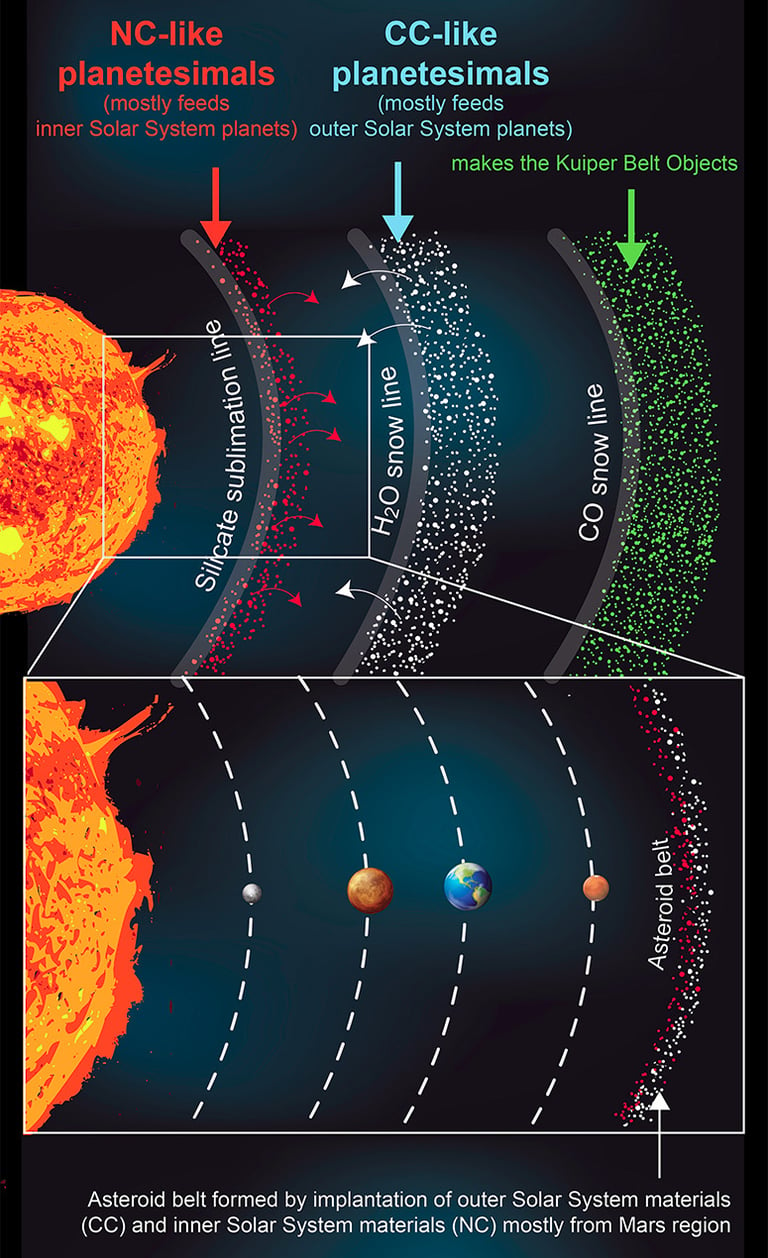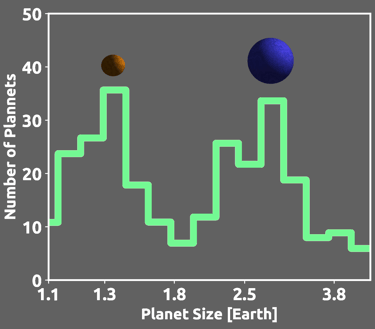Planet Formation and Evolution in Stellar Clusters

This animation shows the trapping of a distant planet during a dynamical instability in the early Solar System, as modeled in Izidoro et al. (2025, Nature Astronomy). Starting from a compact system of fully formed gas giants, the simulation shows a hypothetical Planet-9 being scattered outward by Jupiter at ~0.4 Myr. Subsequent stellar encounters with members of a 200-star birth cluster incrementally raise its pericentre, with a decisive encounter at ~2 Myr placing it on a distant, long-lived orbit. The host star cluster disperses by 3 Myr, leaving behind a Solar System architecture closely resembling the real one.your text here...

This is another animation from Izidoro et al. (2025, Nature Astronomy) that illustrates the dynamical evolution of a planetary system embedded in a 200-star stellar cluster with a Plummer radius of 40,000 au. Three fully formed gas giant planets initially orbit a solar-mass star. A dynamical instability at ~10 kyr causes one of the planets to be scattered onto a wide, unstable orbit. At ~100 kyr, a close stellar flyby by Star-197 raises the planet’s pericentre, stabilizing it on a distant, bound orbit—reminiscent of observed long-period exoplanets. A second planet undergoes scattering during another instability at ~1 Myr and is ultimately ejected at ~1.3 Myr, becoming a free-floating planet. The simulation runs until 4 Myr, by which time the cluster has dispersed. The wide-orbit planet remains stably bound to its host star.
The Exoplanet Radius Valley from Gas-driven Planet Migration and Breaking of Resonant Chains
The size frequency distribution of exoplanet radii between 1 and 4R⊕ is bimodal with peaks at ∼1.4 R⊕ and ∼2.4 R⊕, and a valley at ∼1.8 R⊕. This radius valley separates two classes of planets—usually referred to as "super-Earths" and "mini-Neptunes"—and its origin remains debated. One model proposes that super-Earths are the outcome of photoevaporation or core-powered mass loss stripping the primordial atmospheres of the mini-Neptunes. A contrasting model interprets the radius valley as a dichotomy in the bulk compositions, where super-Earths are rocky planets and mini-Neptunes are water-ice-rich worlds. In this work, we test whether the migration model is consistent with the radius valley and how it distinguishes these views. In the migration model, planets migrate toward the disk's inner edge, forming a chain of planets locked in resonant configurations. After the gas disk dispersal, orbital instabilities "break the chains" and promote late collisions. This model broadly matches the period-ratio and planet-multiplicity distributions of Kepler planets and accounts for resonant chains such as TRAPPIST-1, Kepler-223, and TOI-178. Here, by combining the outcome of planet formation simulations with compositional mass–radius relationships and assuming the complete loss of primordial H-rich atmospheres in late giant impacts, we show that the migration model accounts for the exoplanet radius valley and the intrasystem uniformity ("peas in a pod") of Kepler planets. Our results suggest that planets with sizes of ∼1.4 R⊕ are mostly rocky, whereas those with sizes of ∼2.4 R⊕ are mostly water-ice-rich worlds. Our results do not support an exclusively rocky composition for the cores of mini-Neptunes.




Exoplanets
Solar System


Planetesimal rings as the cause of the Solar System’s planetary architecture
Astronomical observations reveal that protoplanetary disks around young stars commonly have ring- and gap-like structures in their dust distributions. These features are associated with pressure bumps trapping dust particles at specific locations, which simulations show are ideal sites for planetesimal formation. Here we show that our Solar System may have formed from rings of planetesimals—created by pressure bumps—rather than a continuous disk. We model the gaseous disk phase assuming the existence of pressure bumps near the silicate sublimation line (at T ~ 1,400 K), water snowline (at T ~ 170 K) and CO snowline (at T ~ 30 K). Our simulations show that dust piles up at the bumps and forms up to three rings of planetesimals: a narrow ring near 1 au, a wide ring between ~3–4 au and ~10–20 au and a distant ring between ~20 au and ~45 au. We use a series of simulations to follow the evolution of the innermost ring and show how it can explain the orbital structure of the inner Solar System and provides a framework to explain the origins of isotopic signatures of Earth, Mars and different classes of meteorites. The central ring contains enough mass to explain the rapid growth of the giant planets’ cores. The outermost ring is consistent with dynamical models of Solar System evolution proposing that the early Solar System had a primordial planetesimal disk beyond the current orbit of Uranus.
Origin of Water in the Terrestrial Planets: Insights from Meteorite Data and Planet Formation Models
Water condensed as ice beyond the water snowline, the location in the Sun’s natal gaseous disk where temperatures were below 170 K. As the disk evolved and cooled, the snowline moved inwards. A low temperature in the terrestrial planet-forming region is unlikely to be the origin of water on the planets, and the distinct isotopic compositions of planetary objects formed in the inner and outer disks suggest limited early mixing of inner and outer Solar System materials. Water in our terrestrial planets has rather been derived from H-bearing materials indigenous to the inner disk and delivered by water-rich planetesimals formed beyond the snowline and scattered inwards during the growth, migration, and dynamical evolution of the giant planets.
